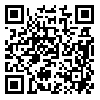Volume 12, Issue 57 (2024)
CFL 2024, 12(57): 169-200 |
Back to browse issues page
Download citation:
BibTeX | RIS | EndNote | Medlars | ProCite | Reference Manager | RefWorks
Send citation to:



BibTeX | RIS | EndNote | Medlars | ProCite | Reference Manager | RefWorks
Send citation to:
Vaez S, Manouchehry Z. The Psychoanalytic and Socio-Cultural Critique of the Character “Zat al-Dawahi, the Devil in the Guise of a Worshipper” in One Thousand and One Nights. CFL 2024; 12 (57) :169-200
URL: http://cfl.modares.ac.ir/article-11-72982-en.html
URL: http://cfl.modares.ac.ir/article-11-72982-en.html
1- Professor of Persian language and literature, Allameh Tabataba’i University, Tehran, Iran , saeedvaez28@gmail.com
2- PhD Candidate of Persian language and literature, Allameh Tabataba’i University, Tehran, Iran.
2- PhD Candidate of Persian language and literature, Allameh Tabataba’i University, Tehran, Iran.
Abstract: (1449 Views)
|
Keywords: One Thousand and One Nights, psychoanalytic critique, socio-cultural critique, Zat al-Dawahi, The Tale of King Numan and His Sons.
Article Type: پژوهشی اصیل |
Subject:
Folklore literature
Received: 2023/12/17 | Accepted: 2024/05/3 | Published: 2024/07/18
Received: 2023/12/17 | Accepted: 2024/05/3 | Published: 2024/07/18
Send email to the article author
| Rights and permissions | |
 |
This work is licensed under a Creative Commons Attribution-NonCommercial 4.0 International License. |








